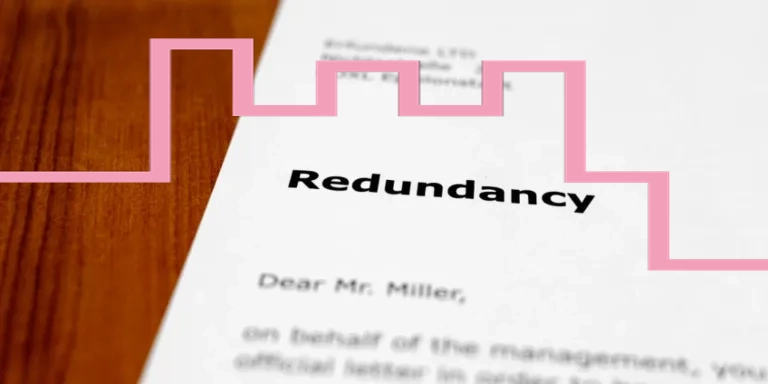With a wave of redundancies set to take place in the coming months, Lodders’ employment law expert, sets out important considerations for employers.
The recent coronavirus outbreak, and the subsequent UK-wide lockdown, has meant a lot of businesses have been impacted financially, with many being forced to make difficult decisions relating to staff. A YouGov survey released on 18 June 2020 found that 51 percent of businesses surveyed were expecting to make some level of redundancies when the furlough scheme ends.
Furlough timeline
The flexible furlough scheme is only available for employees previously furloughed for at least three consecutive weeks between 1 March 2020 and 30 June 2020. The last date for furloughing employees for the first time was 10 June.
However, those returning from family-related leave do not need to have been previously furloughed before the 10 June cut-off date, provided their employer has made use of the furlough scheme. With the scheme gradually tapering down to a close at the end of October, business owners are in the unenviable position of having to assess whether their business remains sustainable without closures or staffing reductions.
Avoiding compulsory redundancies
In light of the effects Covid-19 has had on the economy, many businesses are no longer viable with current staffing levels, and are beginning to plan for redundancies.
In every case, businesses should consider whether it can avoid making compulsory redundancies. Possible ways this can be done is by seeking voluntary redundancy or early retirement. Businesses can also look to lay off self-employed contractors and freelancers, as well as limiting recruitment, and filling current vacancies with existing employees.
Unfortunately, with the unprecedented economic impacts of the Coronavirus outbreak, making redundancies is, in some instances, unavoidable.
Redundancies must be genuine
Before consulting with employees or dismissing for redundancy, the employer must be satisfied that the statutory definition of redundancy applies. Three sets of circumstances are identified in the statutory definition:
- Closure of the business altogether;
- Workplace closure (meaning closure of one of several sites, or relocation to a new site); or
- Lower demand within the business for employees to do a particular kind of work.
Once a business has established there is a genuine redundancy, then it must ensure employees are not unfairly selected for redundancy. This means factors like skills, qualifications, and performance should be considered. Aspects such as length of service can be considered, but not as a lone factor, as this can be seen as age discrimination.
Unfair selection criteria also include factors such as pregnancy, parental leave, acting as an employee or trade union representative, as well as age and gender. A full list of the criteria to consider when making redundancies can be found here.
Making furloughed employees redundant
Although many employees are currently still on furlough leave, this does not prevent businesses from starting to plan for redundancies. Furloughed employees can be considered for redundancy selection, as long as a wider pool of employees is also considered, if this is appropriate in the circumstances. Identifying the correct pools of employees at risk of redundancy will differ, depending on the particular facts of each business.
Businesses should not, however, exclusively consider furloughed employees for redundancy. The unprecedented situation presented by Covid-19 means that in some cases, the furlough selection was conducted quickly, and therefore may not stand up to scrutiny as a fair redundancy selection process.
It has been suggested by some that businesses should allow an employee to remain on furlough until the end of the Coronavirus Job Retention Scheme (CJRS). However, for many businesses, these jobs have disappeared already, and it would not be wrong to consider redundancies before October 2020. This is particularly true if redundancies are part of a wider restructuring to keep the business sustainable.
Employee rights when being made redundant
Where a business proposes to make redundancies of 20 or more employees within a period of 90 days or less (collective redundancies), it must consult on its proposal with representatives of the affected employees, and also notify the Department for Business, Energy and Industrial Strategy.
There are no set guidelines when making fewer than 20 employees redundant, however, consultation with employees, and ensuring a fair procedure is followed, remains essential.
Employees with at least two years’ continuous service with the employer at the relevant date, who have been dismissed by reason of redundancy, or become eligible for a redundancy payment because they have been laid off or kept on short-time working, are entitled to a Statutory Redundancy Payment (SRP). However, in some cases employees may be contractually entitled to receive more than SRP, or they may be entitled to a contractual payment in circumstances where they do not qualify for SRP (for example, where they have less than two years’ service).
Businesses must give employees notice and agree upon a leaving date once they have finished redundancy consultations. As a minimum, employees must be given a statutory notice period, dependent on how long they have worked.
More information
If you need any advice on redundancies or any other employment-related matter, please contact our Employment team.
Contact usContact us
Need more advice?
For help with a legal problem or more information on any of our services at Lodders, please get in touch with our friendly team. You can contact us via the number or email address below, or fill in the form and we will get back to you as quickly as we can.

Contact a member of the team
Read more
Other news, insights and events








